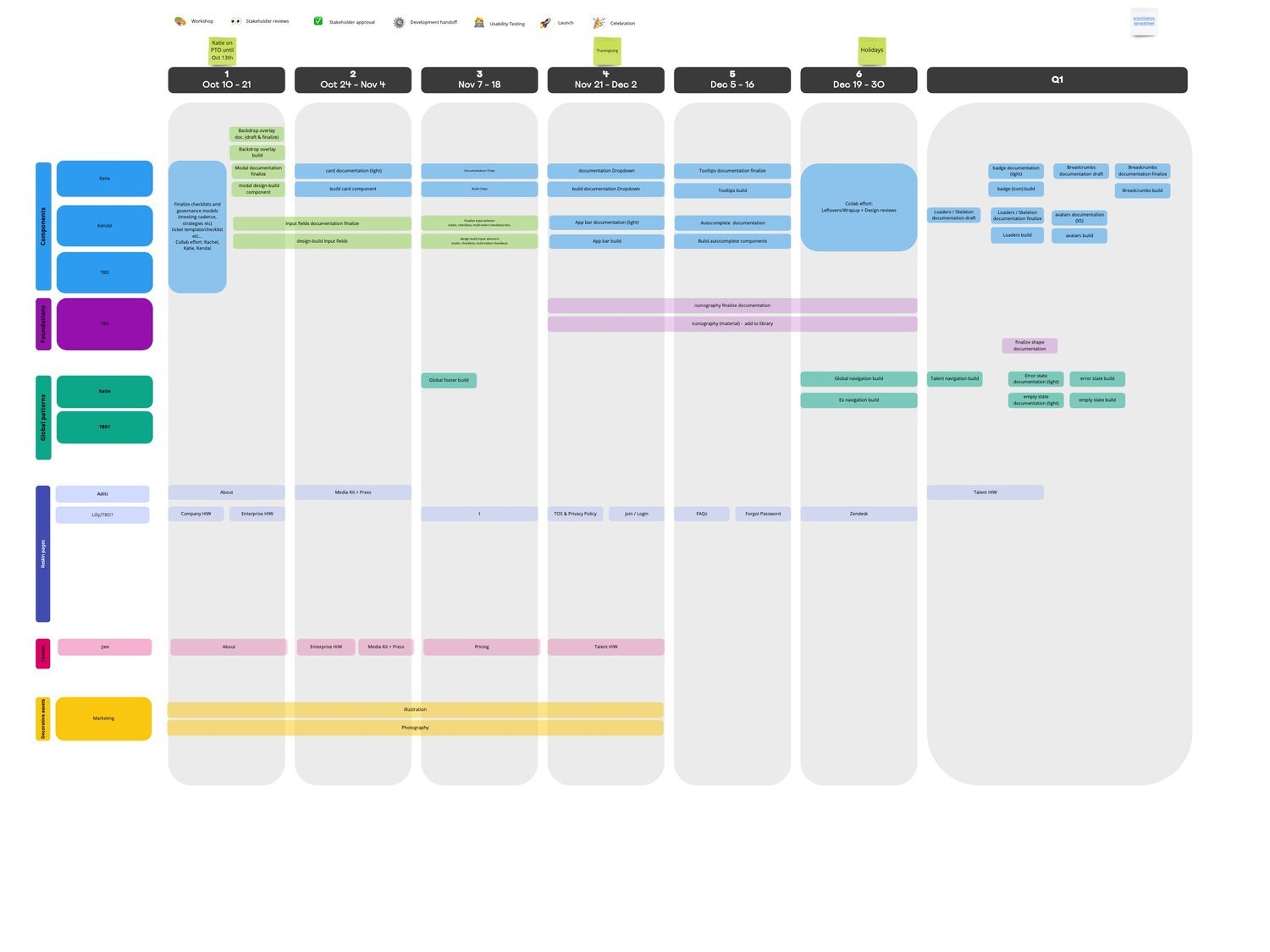Implementing a New Design System Across Multiple Platforms
2023
The Mom Project
Visual Design/UI
Prototyping
User Experience
Background
Our Product Design leader established OKRs for the team, and to meet those goals, the design system initiative was born. Our aim was to create a consistently high-quality bar across the user experience as a team. This includes (1) establishing an MVP TMP UX Pattern Library and (2) supporting the company's rebranding.
My role
I was a product designer for this project.
My responsibilities included:
Thought leader and strategic partner to design director and engineering manager
Collaboration on framework research, project governance, prioritization, and project management
Created, established, and maintained components in the Figma Library
Collaborate with engineers to implement components
Contributed to stakeholder presentations, team communication, and design system education
Our product had out-of-date code, no central design system, and old branding. As a result, we were designing and building inefficiently and our user experience was suffering.
The Design Process
The design process started by defining project governance and selecting MUI as a our design system framework.
Meeting and reviewing processes
Designers brought components to review with engineering in a weekly meeting, where engineers could give early feedback. Engineers also brought in-progress work and QA so designers could provide feedback.
Design and documentation standards
If a designer was to add another component to our figma library we created relationship standards, rules around constraints and auto-layout and needed to include all states. We also ensured that when it’s ready for engineering to add to the design system the proper documentation must be included such as spacing and variants.
Established federated ownership
We knew we wanted to move quickly and did not want any bottlenecks. Therefore, we chose to have shared ownership of the components being added to the design system. This meant we had a designer working with a dedicated engineer, both of which involved a step of peer review.












